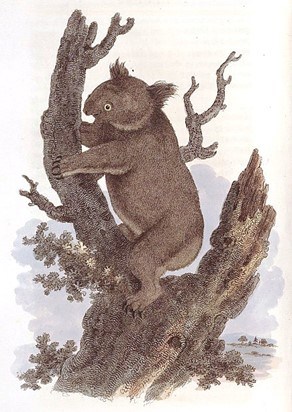Clueless in Key West
by Kim Pederson…….
At Full Metal Trivia Tuesday night at Mary Ellen’s, one of the questions that came up was “how many vaginas does a koala have?” Given that most mammals have one and not having a clue as to the answer, we guessed two. One spare is enough, right? Wrong. The answer was three. So, why does a koala and its compatriot marsupials have three vaginas? Short answer: because they can or, more correctly, because they do.
Apparently, the tri-vage is not the only unusual thing about these Australian teddy bears. If you start a search string with “why does a koala…,” you get suggestions such as these:
- Why does a koala have a stumpy tail?
- Why does a koala have such a big nose?
- Why does a koala sleep so much?
Don’t you have more important things to think about?

I don’t know any of these things. If I were triviasessive [obsessed with…well, you get it], I would be looking all these things up in case they come up as questions. But I’m not, so I’m not. I am curious, though, about the whole love affair with trivia. My first thought is that we have Jeopardy! or Trivial Pursuit to thank for it but it goes much farther back. Let’s start with the Latin roots of the word. In that language, “trivia” refers to the three lower Artes Liberales—grammar, logic, and rhetoric—that form the basic education foundation for the quadrivia of higher education (arithmetic, geometry, music, and astronomy). It later came to describe the place where one road splits into three roads and finally, thanks to Shakespeare, to its modern-day usage as something “trite, common, unimportant, or slight.”
Okay but when did trivia become “a quizzing game involving obscure facts”? It’s unclear. One of the first collections of trivia, Trivialities, bits of information with little consequence, came out in 1902. It included this warning from its author, Logan Pearsall Smith:
I KNOW too much; I have stuffed too many of the facts of History and Science into my intellectuals. My eyes have grown dim over books; believing in geological periods, cave dwellers, Chinese Dynasties, and the fixed stars has prematurely aged me.
The first trivia contests, it seems, were organized by two Columbia University students in the 1960s, who then published a best-selling book called, you guessed it, Trivia, and then another titled Trivial Trivia. In the second, they chastise the trivia nuts who are “indiscriminate enough to confuse the flower of trivia with the weed of minutiae.” The former, they say, “is concerned with tugging at the heartstrings” while the latter focuses on “unevocative questions” such as “which state is the largest consumer of Jell-O?” I don’t recall any strings in my heart being jerked about by the koala vagina question, which means the Tuesday evening event might better be known as “Full Metal Minutiae.”
All this trivistory, however, does not answer my question: why do people love trivia and trivia contests. A Google search reveals that no one online has tackled this thorny issue, at least not in an SEO-effective manner. My own theory has to do with Smith’s subtitle: “bits of information with little consequence.” Trivia contests are exercises in serioscapism, that is, the diversion of the mind from the slings and arrows of harsh reality to something ridiculously unimportant. I suppose you could look at the downside of this, as novelist Chuck Palahniuk does when he says that “game shows are designed to make us feel better about the random, useless facts that are all we have left of our education.” Or you could—as I choose to do—just say that discovering what informational detritus has managed to lodge itself somehow in your brain over the years is just plain fun in an intellectually sadomasochistic kind of way. And on the other but still positive side of the coin, playing trivia helps reduce the things we don’t know we don’t know. Put another way, playing trivia doesn’t necessarily make one smarter, but it does reduce our ignorance of our ignorance. That can’t be a bad thing, right?
Okay, okay. I know you’ve been dying for the answer since the paragraph before this one. Here it is: Utah. The state anchors what’s known as the Jell-O Belt. Its official dessert is lime Jell-O. And finally, the first four flavors of Jell-O were orange, lemon, strawberry, and grass. Yes, grass.
And now, if you’re wise and want to avoid premature aging, you’ll unstuff that from your intellectuals immediately. I have.
Image: George Perry’s illustration in his 1810 Arcana was the first published image of the koala. Public Domain.
~~~~~~~~~~
Visit Kim Pederson’s blog RatBlurt: Mostly Random Short-Attention-Span Musings.

